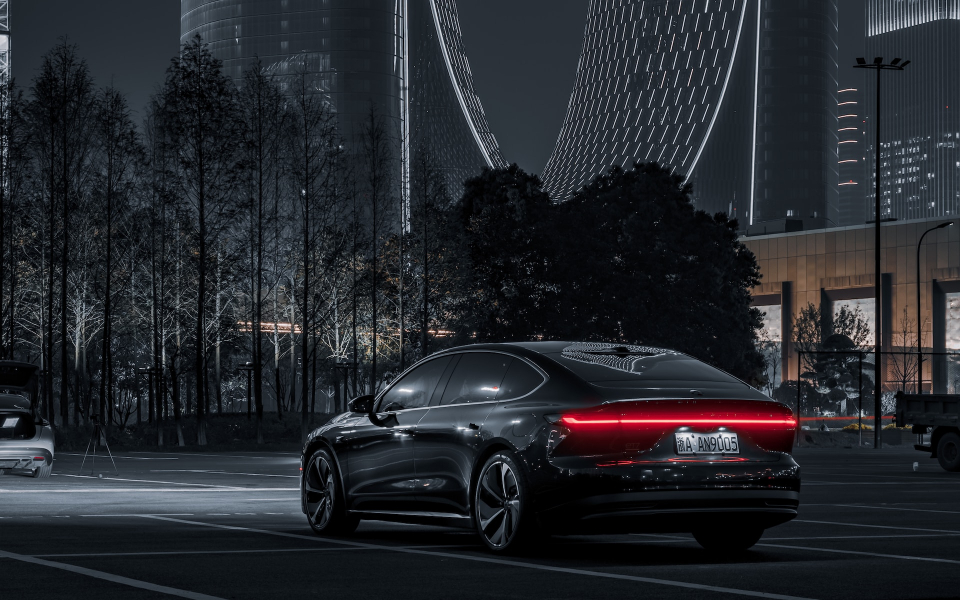The letters JAC may be set to disappear from the tail logos of vehicles sold under the Nio Inc.
The industry was abuzz with talk of a gear shift after media reports on Dec. 5 said Nio had appeared on a list of approved vehicle manufacturers issued by China's Ministry of Industry and Information Technology, implying the EV company had obtained its own car production permit.
The direction of travel became clear later that day when Nio's long-standing partner, JAC, announced the results of bids for some of its automotive production facilities. Nio will take over two of JAC's manufacturing bases for 1.66 billion yuan and 1.49 billion yuan, in a deal worth nearly 3.16 billion yuan ($443 million).
Those plants, known as F1 and F2, are both advanced manufacturing bases used to produce Nio's vehicles for the last seven years.
The news came as little surprise to market watchers, who had been speculating about Nio's manufacturing ambitions since October when JAC launched the bidding process. Nio was rumored to be keen to buy the facilities and gain the license to begin independent production. However, both parties remained silent at the time.
OEM Model: Pros And Cons
Having secured factories and a production permit, Nio can move on from the original equipment manufacturer (OEM) model under which its cars were previously produced.
The OEM route was the popular choice when a host of new car companies broke onto the scene from 2015, including the trio of Nio, Li Auto
There are two ways to obtain the required production licenses, either acquiring companies with existing certification or applying independently for a permit. Nio chose the second option.
The manufacturing partnership dates from 2016, when JAC began producing electric vehicles for Nio. Other new entrants such as as Xpeng, Li Auto and Leap Motor also took the OEM path to establish themselves quickly in the Chinese market. However, the model does have its downsides, notably the client's limited decision-making power in the production process.
Some EV upstarts have obtained licenses through the alternative route of acquisitions. For example, Xpeng acquired Guangdong Foday Automobile Co. Ltd. to become an approved manufacturer, while Li Auto bought a subsidiary of Chongqing Lifan Automobile Co. Ltd. and Leap Motor took over Fujian New Fuda Automotive Industry Co. Ltd.
EV startup WM Motor, currently battling financial woes, managed to get hold of a couple of prized licenses in 2017 by acquiring two car firms. The company's founder, Shen Hui, was clear about the benefits. "Only by building our own factories can we control product quality from the source," he once told the media. "In addition, under the OEM model, data cannot form a closed loop, and the benefits of digitization for car companies cannot be fully realized."
Nio founder and CEO William Li also described the benefits of independent production during an earnings conference call last week. He said bringing the entire manufacturing process into the company would, overall, reduce manufacturing costs by around 10%.
Positive Earnings Report
Would the deal to achieve those benefits put pressure on Nio's finances? The company's third-quarter earnings, released on Dec. 5, suggest the EV maker has plenty of resources to draw on.
The company reported that its cash and cash equivalents, restricted cash, short-term investments and long-term time deposits amounted to 45.2 billion yuan at the end of September, an increase of 13.7 billion yuan from the previous quarter.
Broadly speaking it was a positive report card, with Nio's total revenue reaching 19.07 billion yuan, a 46.6% jump from the year-earlier quarter and a bigger leap of 117.4% from the prior quarter.
Nio's gross margin was 8% in the third quarter compared with 13.3% in the same period of last year and 1% in the second quarter. In contrast, Xpeng's gross margin was in negative territory at -2.7% while Li Auto's was an impressive 22.0%.
Another key metric, vehicle margin, returned to double digits at 11%, up 4.8 percentage points quarter on quarter but down 5.4 percentage points on a year-on-year basis. For comparison, Xpeng's vehicle margin was -6.1% and Li Auto's was 21.1%.
Nio's vehicle deliveries, which are closely watched by the market, were on the rise. The figure came in at 55,400, up 135.7% quarter on quarter and 75.4% higher than the same quarter a year earlier. The comparative figure for Xpeng was more than 40,000 units while Li Auto's shipped more than 100,000 vehicles.
Looking ahead to the fourth quarter, Nio expects to deliver between 47,000 and 49,000 vehicles, which would be around 17% to 22% more than in the same quarter of 2022. It predicted total revenue in a range between 16.1 billion yuan and 16.7 billion yuan, marking a slight increase from the previous year's equivalent quarter.
After the earnings release, Nio's shares rose for two straight trading days, with its U.S. shares up nearly 6% and its Hong Kong shares gaining about 7%. However, the company's U.S. shares are down 25% in the year to date, and its Hong Kong shares have fallen 24%.
Haitong International Securities said in a research report that Nio was demonstrating to the industry how a closed loop of research, production and sales can be formed in an environment of overcapacity and strict control of production licenses. Mizuho Securities maintained a Buy rating on the stock while lowering its 12-month price target from $18 to $15.
Meanwhile, the market is also digesting the news that Nio may be planning to hive off its battery production unit. A report on Reuters, citing unnamed sources with knowledge of the matter, said the spin-off will take place as early as the end of the year and the unit will seek external investors at a valuation to be determined later.
Nio has not responded to the report about the battery unit. It is worth noting that two Chinese carmakers, Changan Automobile and Geely Holding Group, joined Nio in a battery swap alliance in November this year.










